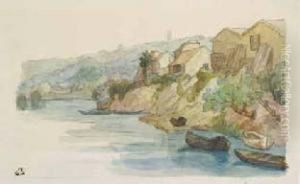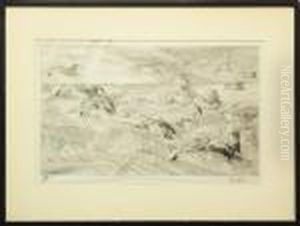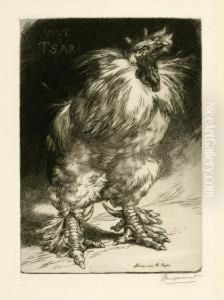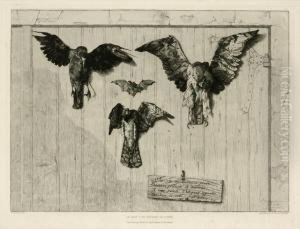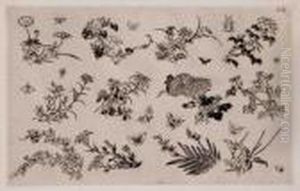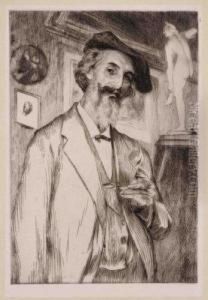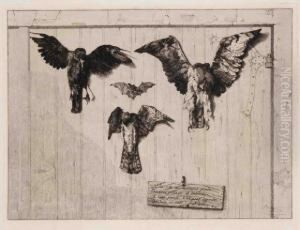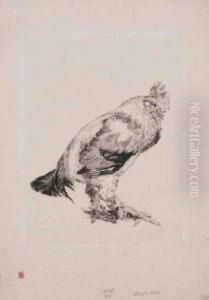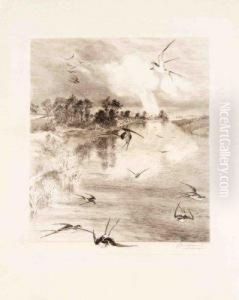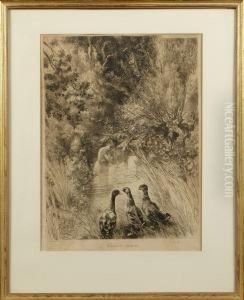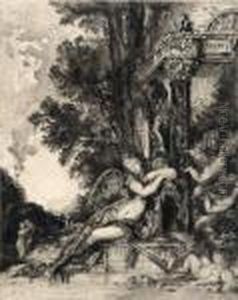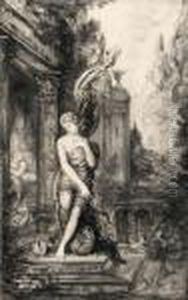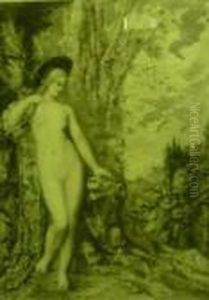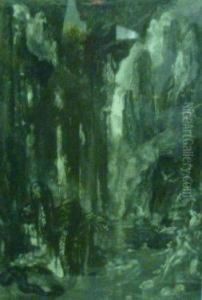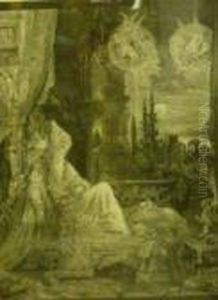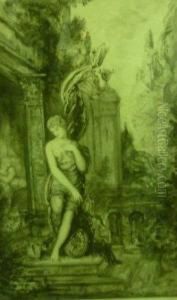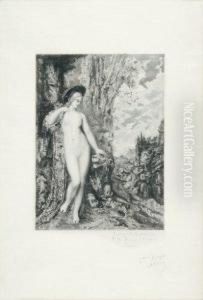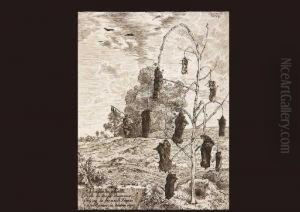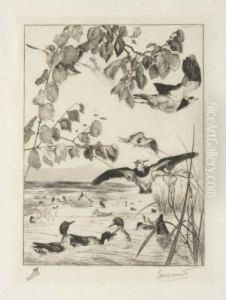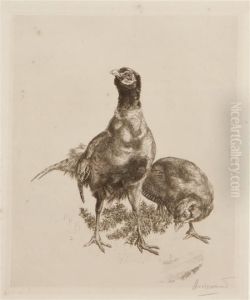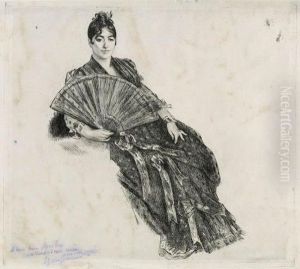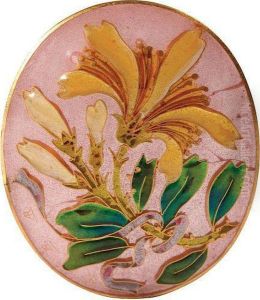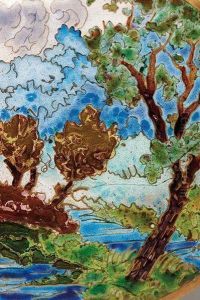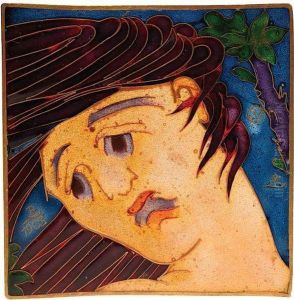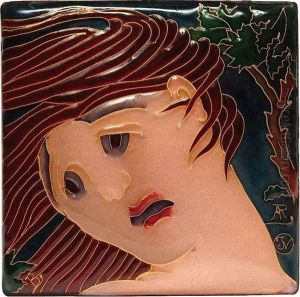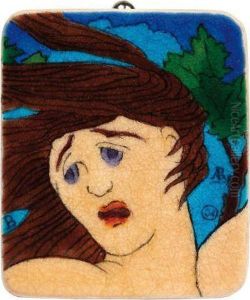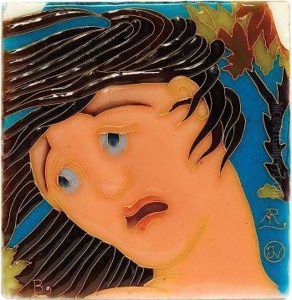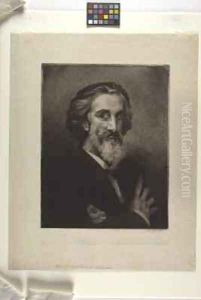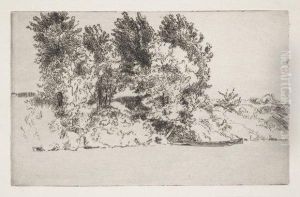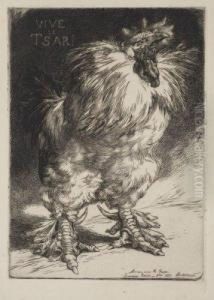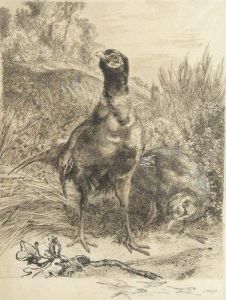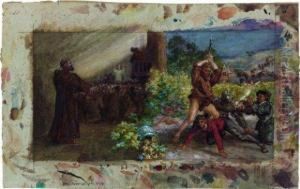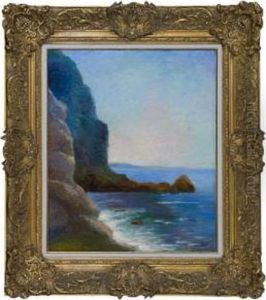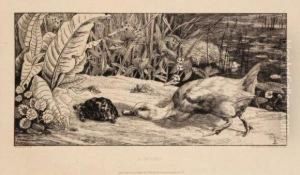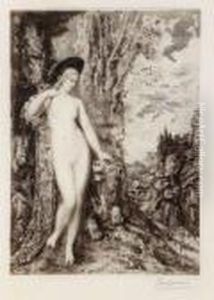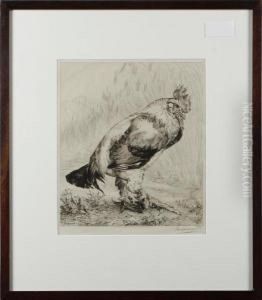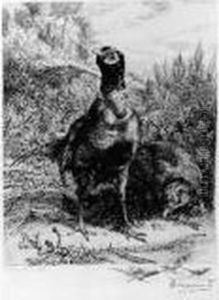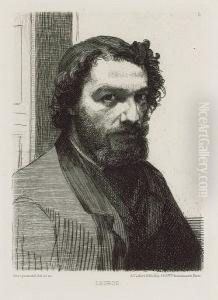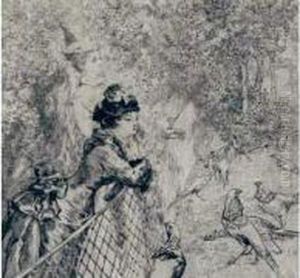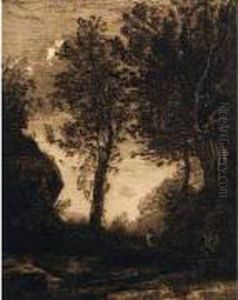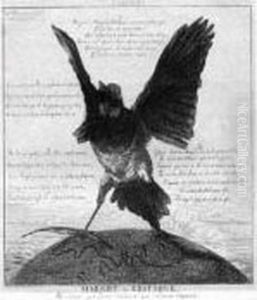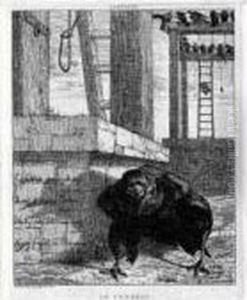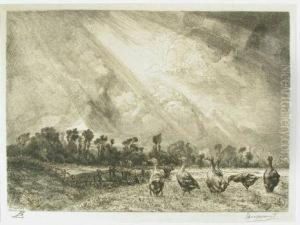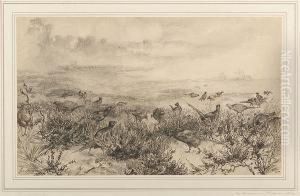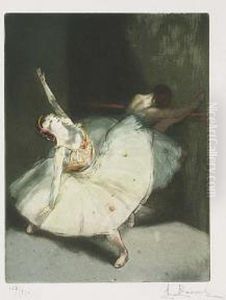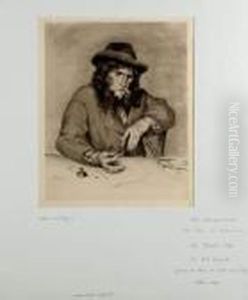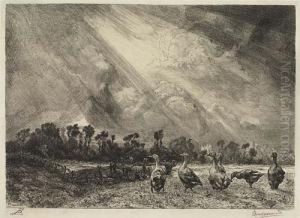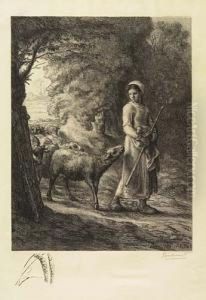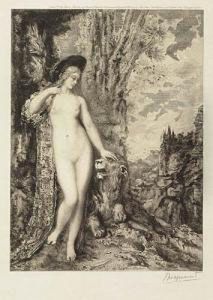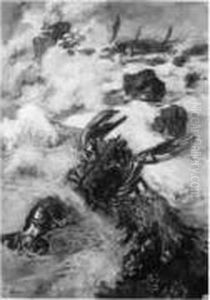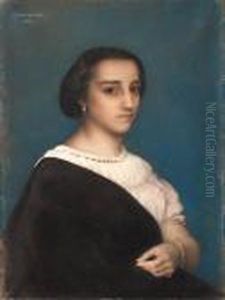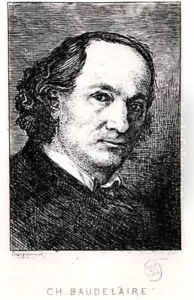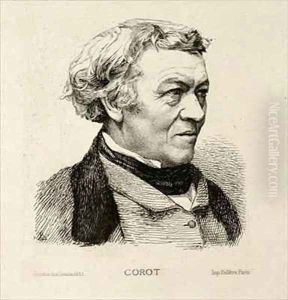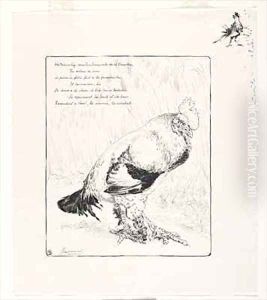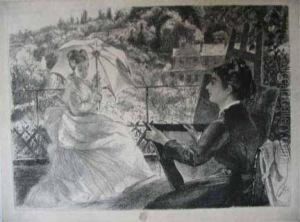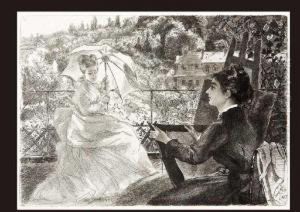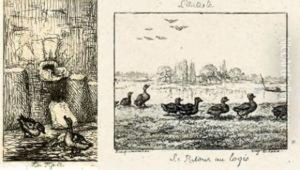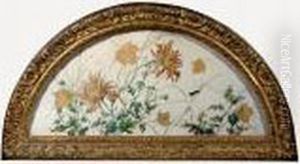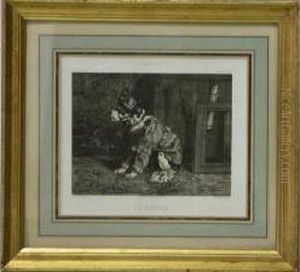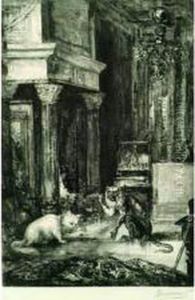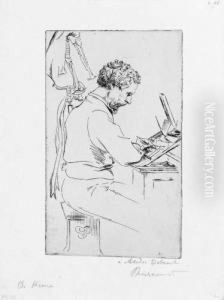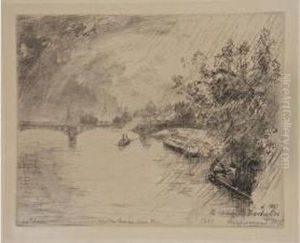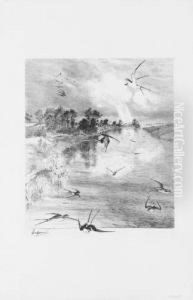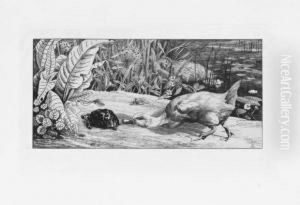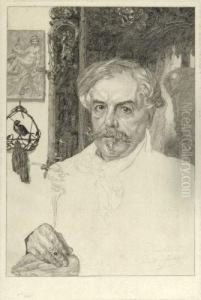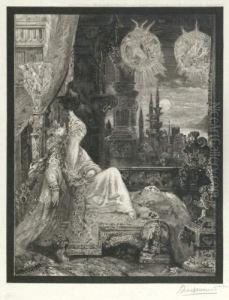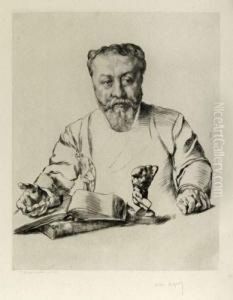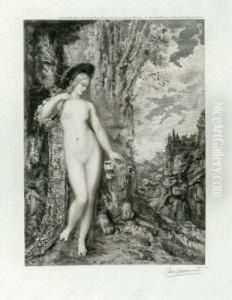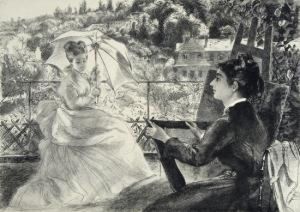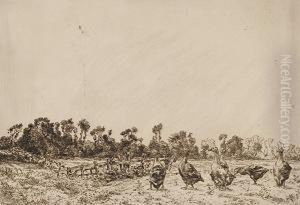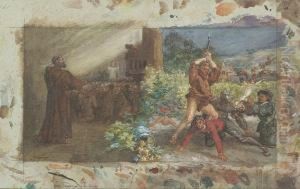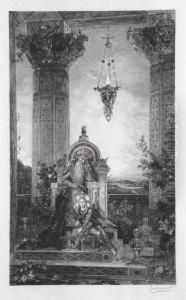Felix Bracquemond Paintings
Felix Bracquemond was a French artist and etcher who played a significant role in the revival of printmaking, particularly etching, in the 19th century. Born on May 22, 1833, in Paris, Bracquemond started his artistic career as an apprentice lithographer, while also studying painting. Over time, he became more interested in etching and was largely self-taught in this medium. He was influenced by the work of old masters such as Albrecht Dürer and Rembrandt, and he began producing etchings that were notable for their technical skill and expressive power.
Bracquemond's work quickly garnered attention, and he became a central figure in the Etching Revival, a movement that sought to re-establish etching as a respected art form alongside painting and sculpture. In 1863, he was invited to participate in the Salon des Refusés, an exhibition of works rejected by the official Paris Salon. His entries were praised for their originality and craftsmanship.
Throughout his career, Bracquemond was an innovator not only in the field of etching but also in ceramics. He worked with the famous Sèvres porcelain factory, where he introduced Japanese aesthetics and techniques, which were then becoming popular in Europe. This cultural interchange was part of the larger Japonism movement, which significantly influenced many European artists of the time, including the Impressionists.
Bracquemond was also involved in various artistic circles and had connections with many prominent artists of his era, including Édouard Manet and the Impressionist painters. His wife, Marie Bracquemond, was an accomplished Impressionist painter in her own right. Despite his associations with the Impressionists, Bracquemond's own style remained distinct, characterized by a combination of realism and a strong graphic quality.
Throughout his life, Bracquemond was dedicated to elevating the status of printmaking and to educating younger artists. He wrote extensively on art and served as a mentor to many. His influence extended to a number of important artists of the late 19th and early 20th centuries, who were inspired by his commitment to the craft of etching and his artistic vision.
Felix Bracquemond passed away on October 29, 1914, leaving behind a legacy as one of the leading figures in the Etching Revival and as an artist who bridged the gap between traditional and modern art practices. His work is held in numerous museum collections across the world and continues to be studied and admired for its innovation and mastery.
